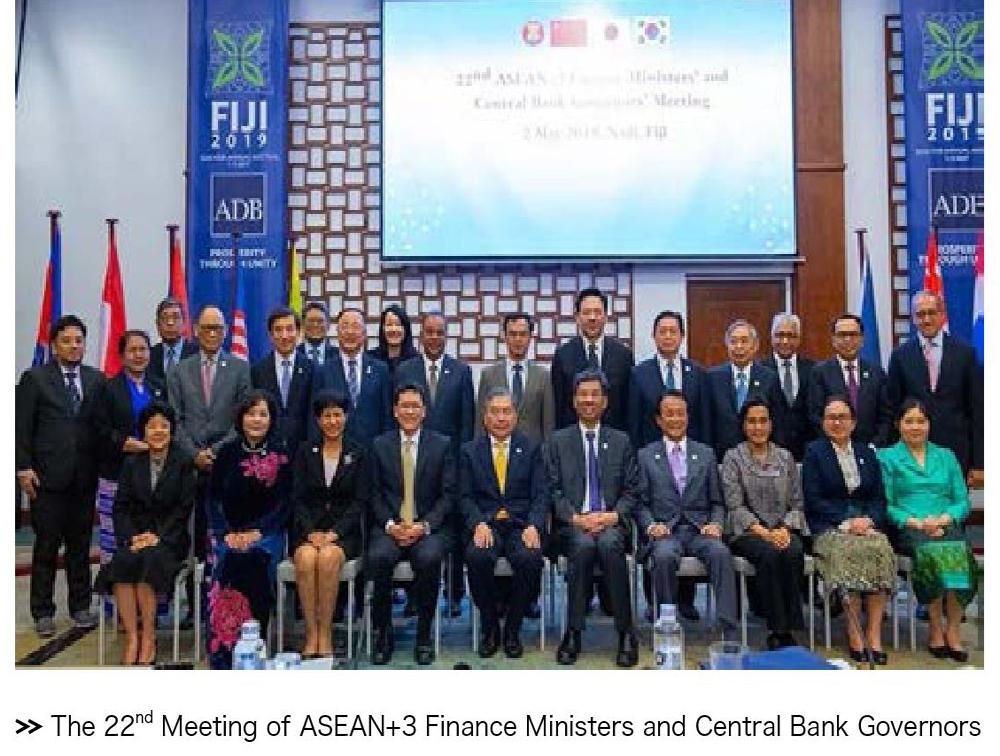Why ASEAN Financial Safety Nets Seem Inadequate in 2020?
2020-03-30PreetamKaushik
Preetam Kaushik

Southeast Asia is one of the fastest-growing regional economies by 2020. However, insufficient financial safety nets leave the region economically vulnerable.
In the age interconnectivity, the risks of a regional or national financial crisis escalating into a global crisis are higher than ever. Memories of 1997 and 2008 are still fresh in the public consciousness.
In the wake of the 1997 Asian Financial Crisis, the Chiang Mai Initiative Multilateralisation (CMIM), a currency swap agreement between the ten ASEAN member states, Japan, China, and South Korea (ASEAN+3) was born. The initiative, seen as a more palatable alternative to the politically restrictive International Monetary Fund (IMF) assistance, took 13 years to formally launch, by which time the world (and ASEAN along with it) had already gone through another major financial crisis.
In the more than two decades since the Asian Crisis, has the region learnt from 1997 and 2008 and implemented safeguards to protect ASEANs economies and the regional financial market?
Lessons from 1997 proved decisive in 2008
Despite not being at the epicentre of the crisis in 2008, the fallout was swift to arrive at the shores of Southeast Asia. Asian stock prices fell by 60%, the costs of sovereign credit default swap (CDS) spreads tripled for many ASEAN nations, exports plummeted by 30%, and the regional economy contracted by 8.3%.
While the negative impacts of the 2008 global financial crisis rippled across the ASEAN region, there were also many positive signs. For starters, the larger Asian economies, including the ASEAN giant Indonesia, were able to weather the worst of the storm due to strong domestic demand.
Lessons from the 1997 crisis were also well implemented, protecting ASEANs economies from structural instability and erosion. Vulnerabilities like currency mismatches, risky lending practices, dependence on foreign external credit, and lax oversight of financial markets were all minimised.
National governments were swift to react. They introduced decisive fiscal stimulus packages and made sweeping interest rate cuts. These measures, which were conspicuously absent in 1997, allowed for a faster rebound and sustained growth rates well ahead of the global average over the last decade.
CMIM has evolved but faces lingering questions
The launch of CMIM occurred during the early stages of recovery from the 2008 crisis. The existing CMI bilateral accords had proven insufficient in meeting the liquidity needs of nations like Indonesia and South Korea, who were forced to seek help from external sources.
To avoid a repeat of the situation, the bloc turned its focus away from bilateral agreements and adopted a multilateral approach. The CMIM funding was raised to US$240 billion from just US$12 billion, and the procedures for member nations to trigger the swaps were also standardized.
Other reforms, like the inclusion of regional currencies like the Yen and Yuan into the currency pool in May 2019, done at the behest of China and Japan, took the first step towards reducing regional dependence on US dollars for liquidity.
Despite the intent to establish the CMIM as an alternative relief mechanism to the IMF, which is widely reviled among developing nations, the IMF remains a prominent factor within the CMIM. The total withdrawable amount delinked from the IMF is modest in comparison to linked fund.
The IMF linkage in CMIM swaps has compelled some ASEAN nations to pursue bilateral swaps as a preferable safety net. Indonesia, for example, relies on bilateral swaps for a greater share of its financial safety net than regional financing agreements (RFAs) like the CMIM. Such a large economy putting its faith elsewhere undermines the relevance of the initiative.
CMIM in its present form is not enough
The 2008 crisis demonstrated that ASEAN nations have become far more resilient and adept at effectively navigating financial storms. But there is no room for complacency in an increasingly unstable and unpredictable global economy.
Many of the factors that led to the ineffectiveness of the CMIM in the aftermath of the 2008 crisis remain. Though the fund is bigger, the persistence of IMF linkages makes it unpalatable for most ASEAN nations. Since member states can only initially receive 30% of the credit line after submitting their applications to the CMIM, they are entitled to apply for the remaining 70% once they have applied to the IMF and been allowed to start their financing programme.
There are also concerns over the dangers of relying too heavily on China and Japan for ASEANs financial security. To dilute their financial clout, ASEAN could benefit from bringing additional participants into the CMIM.
Both ASEAN and the CMIM face some difficult questions at this critical juncture. One thing is crystal clear though — in its present avatar, gradual reforms and evolutions notwithstanding, the CMIM continues to be saddled with the same questions and weaknesses that plagued it in the outset in 2010. If the IMF component cannot be avoided, CMIM might have to be tweaked to accommodate other swap agreements between ASEAN nations and parties outside the ASEAN+3.
· Source: ASEAN Today
